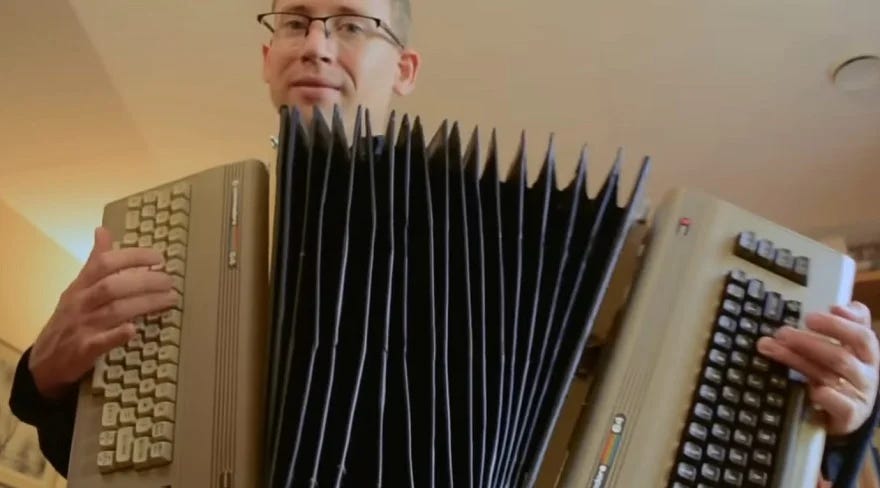The AI future of face photography is already here
In the future, you won't need to get new pictures taken. Just feed the ones you've got into AI and tell it to place you in any scenario you like.
I’ve been playing with a browser-based AI art tool designed to turn face photos into stylized portraits. It’s called DrawAnyone. And, in using it, I have seen the future of photography.
People need pictures of themselves for all kinds of reasons — passports, work IDs, employers’ “About Us” team photos and, of course, online profile pics.
But people tend to be horrible photographers, which is why most of these pictures look terrible.
Easy-to-use online AI art tools, as exemplified by DrawAnyone, can take bad pictures and construct great pictures in any setting with any clothing and any lighting or art style. In other words, you no longer need to hire a good photographer to get good photographs. You can let AI make them using bad photographs.
(All the pictures above used a small set of photos of my face that I uploaded. The Stable Diffusion-based AI generated all the clothing, including the business suits, which I specified with custom text prompts.)
You can get perfect, specific, controlled results even now with a tool like DrawAnyone. But it takes a little skill, knowledge and practice. (Building custom text prompts is a bit like constructing a Google Search of what you want. As an example, the two pictures of myself above wearing a suit and tie used the following custom text prompt: “hyperrealist portrait of a male, businessman, suit and tie, photorealistic, octane render, unreal engine, brilliant lighting, bokeh, volumetric lighting, very detailed faces, 4k”.) You can tweak this in infinite ways using different combinations of sample photos and different words. It takes knowledge of art and photo styles, plus awareness about what’s possible for use with an AI engine like this.
With this tool, a new career is born — the AI picture making specialist.
Let’s say you’re a startup with 25 employees, and you want an “About Us” page showing each person’s picture, name and title. A person skilled in knowing the text prompts that get the desired results (and given between 5 and 10 photos of each employee) could produce 25 perfect “mugshots,” all flattering of the employees and in the same specific style, lighting and vibe.
In the future, when you need new photos for some specific purpose, you won’t take new ones. You can just use old ones, run them through AI — or have a specialist do it — and specify the prompts that give you the new picture you want.
People tend to use DrawAnyone right now to show themselves in fantasy settings, or like someone created by their favorite Japanese cyberpunk fiction illustrator.
But once the novelty wears off, people will realize that this is a revolution in what we’ll do with our personal pictures. We’ll come to see photography as merely the generation of data for making brilliant, perfect, anything-goes pictures with AI. And it’s only a matter of time before AI manipulation is built into our smartphone photo apps.
Here’s why tools like DrawAnyone will spawn a cottage industry where AI portrait specialists take your sample photos and turn them into brilliant, beautiful, professional, whimsical photos styled to order.
Mike’s List of Brilliantly Bad Ideas
1. Finally: Someone is building an edible drone
Drones are useful for delivering food during emergencies. But researchers at the Swiss Federal Institute of Technology Lausanne are working on improving the efficiency of emergency drone food delivery by making the drone itself edible — an edible drone. Because drones need to be light, the edible drones are made mainly out of compressed rice cakes glued together with edible gelatin. It’s wrapped in plastic to keep it dry and fresh. Researchers estimate that a single drone has enough calories to delay death by starvation by a day or two. The drone’s structure and tail surfaces are made of non-edible carbon fiber and foam. Researchers intend to streamline the design, make the rice cakes taste better and figure out how to make currently non-edible components edible.
2. Making music with old computer junk in the garage
A Swedish musician and engineer named Linus Åkesson turned two Commodore 64s and a stack of old 5.25-inch floppies into an accordion. It’s called — what else? — The Commodordion. Best of all, it sounds like an 8-bit video game. The bellows are made from the floppies, and when the air is compressed by pressing the Commodor 64s toward each other, compressed air is forced over a microphone, the sound from which is converted into electronic sound according to the force of the air.
3. How to build a flying car: 1. Take a car. 2. Bolt propellers to it.
The Chinese companies XPeng and AeroHT last month demonstrated their first functioning prototype flying car. (Here’s video of its maiden flight.) The car looks like, well, like a car with giant drone propellers bolted to the top. The aim is to create a car/quadcopter combination that can be driven on public roads and flown on a whim. (I’ve written here before on why the “flying car” idea is a generally bad one.)
Mike’s List of Shameless Self Promotions
How ‘synthetic media’ will transform business forever
Bashing 4 new myths about digital nomads
Why are cloud misconfigurations still a major issue?
Smartphone satellite expectations will soon crash to Earth








